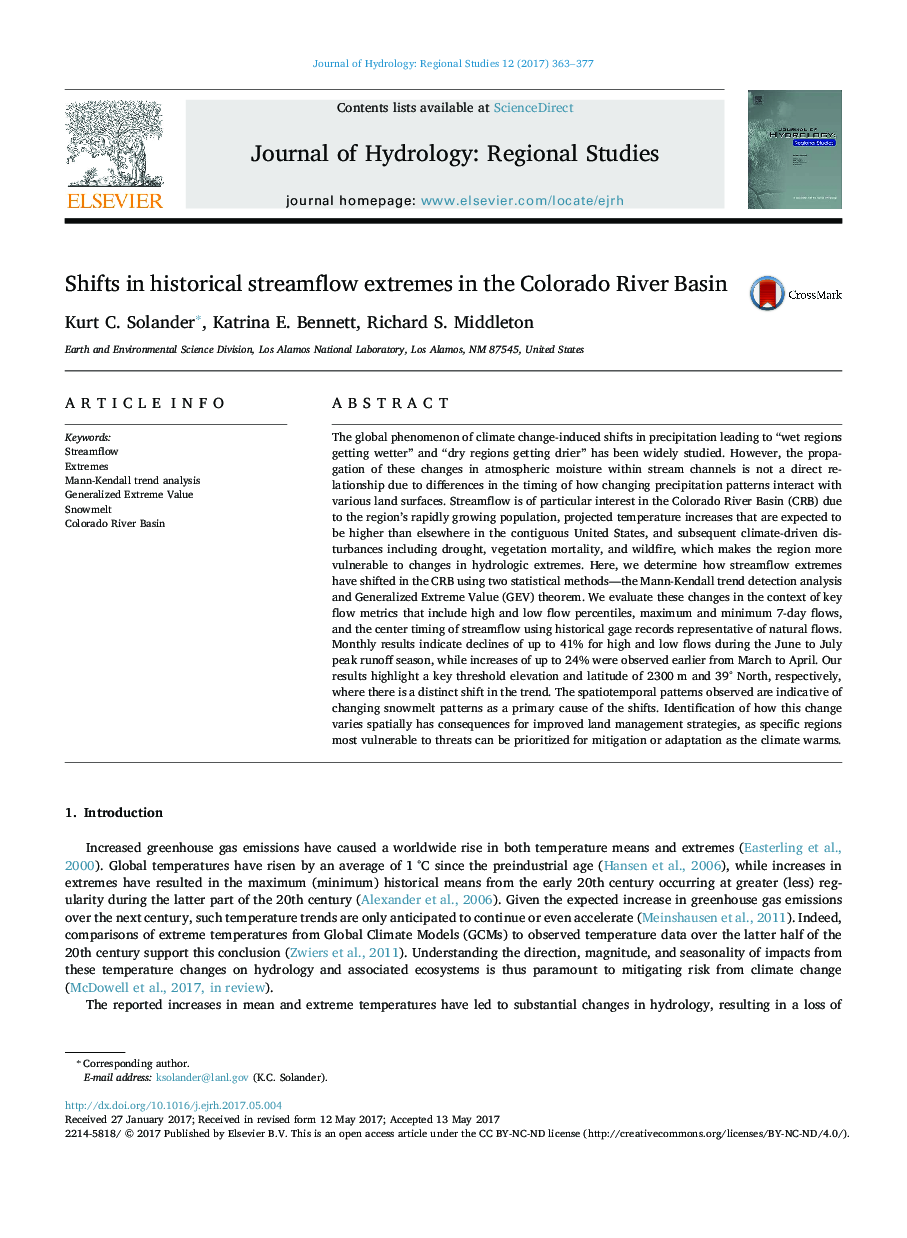| Article ID | Journal | Published Year | Pages | File Type |
|---|---|---|---|---|
| 5752377 | Journal of Hydrology: Regional Studies | 2017 | 15 Pages |
Abstract
The global phenomenon of climate change-induced shifts in precipitation leading to “wet regions getting wetter” and “dry regions getting drier” has been widely studied. However, the propagation of these changes in atmospheric moisture within stream channels is not a direct relationship due to differences in the timing of how changing precipitation patterns interact with various land surfaces. Streamflow is of particular interest in the Colorado River Basin (CRB) due to the region's rapidly growing population, projected temperature increases that are expected to be higher than elsewhere in the contiguous United States, and subsequent climate-driven disturbances including drought, vegetation mortality, and wildfire, which makes the region more vulnerable to changes in hydrologic extremes. Here, we determine how streamflow extremes have shifted in the CRB using two statistical methods-the Mann-Kendall trend detection analysis and Generalized Extreme Value (GEV) theorem. We evaluate these changes in the context of key flow metrics that include high and low flow percentiles, maximum and minimum 7-day flows, and the center timing of streamflow using historical gage records representative of natural flows. Monthly results indicate declines of up to 41% for high and low flows during the June to July peak runoff season, while increases of up to 24% were observed earlier from March to April. Our results highlight a key threshold elevation and latitude of 2300 m and 39° North, respectively, where there is a distinct shift in the trend. The spatiotemporal patterns observed are indicative of changing snowmelt patterns as a primary cause of the shifts. Identification of how this change varies spatially has consequences for improved land management strategies, as specific regions most vulnerable to threats can be prioritized for mitigation or adaptation as the climate warms.
Related Topics
Physical Sciences and Engineering
Earth and Planetary Sciences
Earth-Surface Processes
Authors
Kurt C. Solander, Katrina E. Bennett, Richard S. Middleton,
